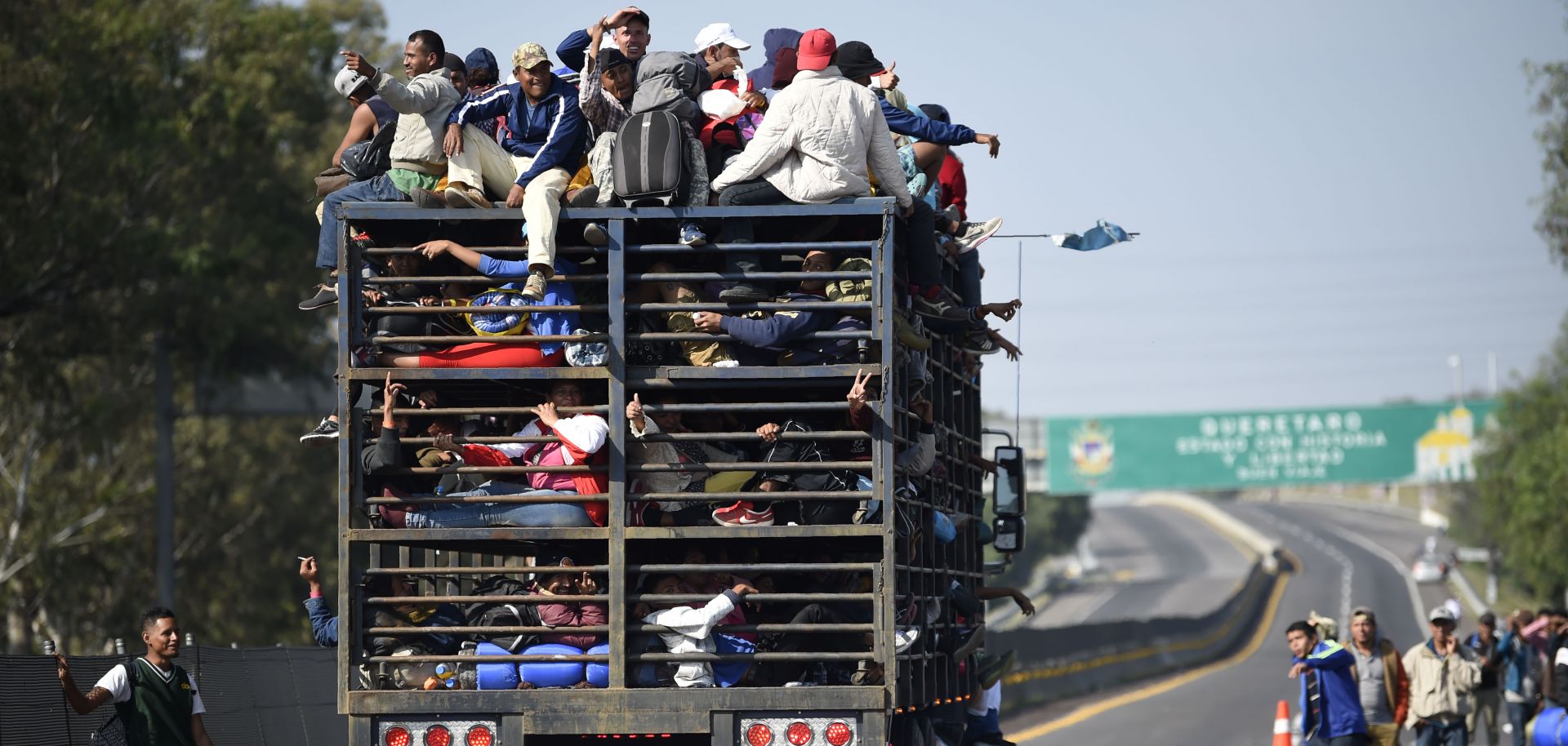ASSESSMENTS
Why Migrant Caravans Are not Behind the Recent U.S.-Mexico Border Crossing Slowdowns
Apr 22, 2019 | 09:00 GMT

A Central American migrant caravan on Nov. 11, 2018, passes through the Mexican state of Guanajuato on its way to the United States.
(ALFREDO ESTRELLA/AFP/Getty Images)
Highlights
- Much has been made of so-called migrant caravans heading toward the U.S.-Mexico border, but they are a relatively small part of a broader problem increasing processing times for legal land border crossings into the United States.
- These slowdowns affect the operations of businesses reliant on cross-border trade.
- While current record levels of immigration will eventually drop off, seemingly intractable staffing challenges at U.S. Customs and Border Protection and the national political fight over the border will continue.
Subscribe Now
SubscribeAlready have an account?
